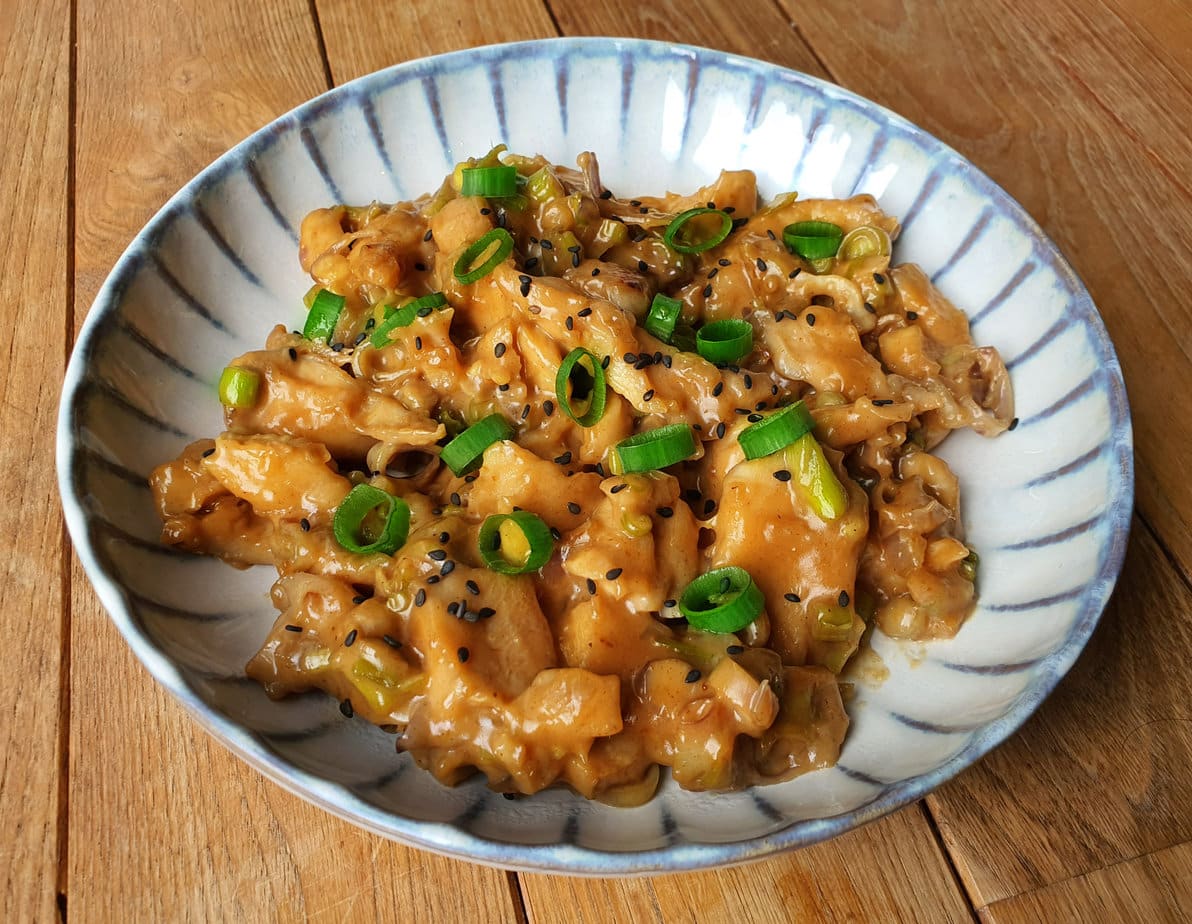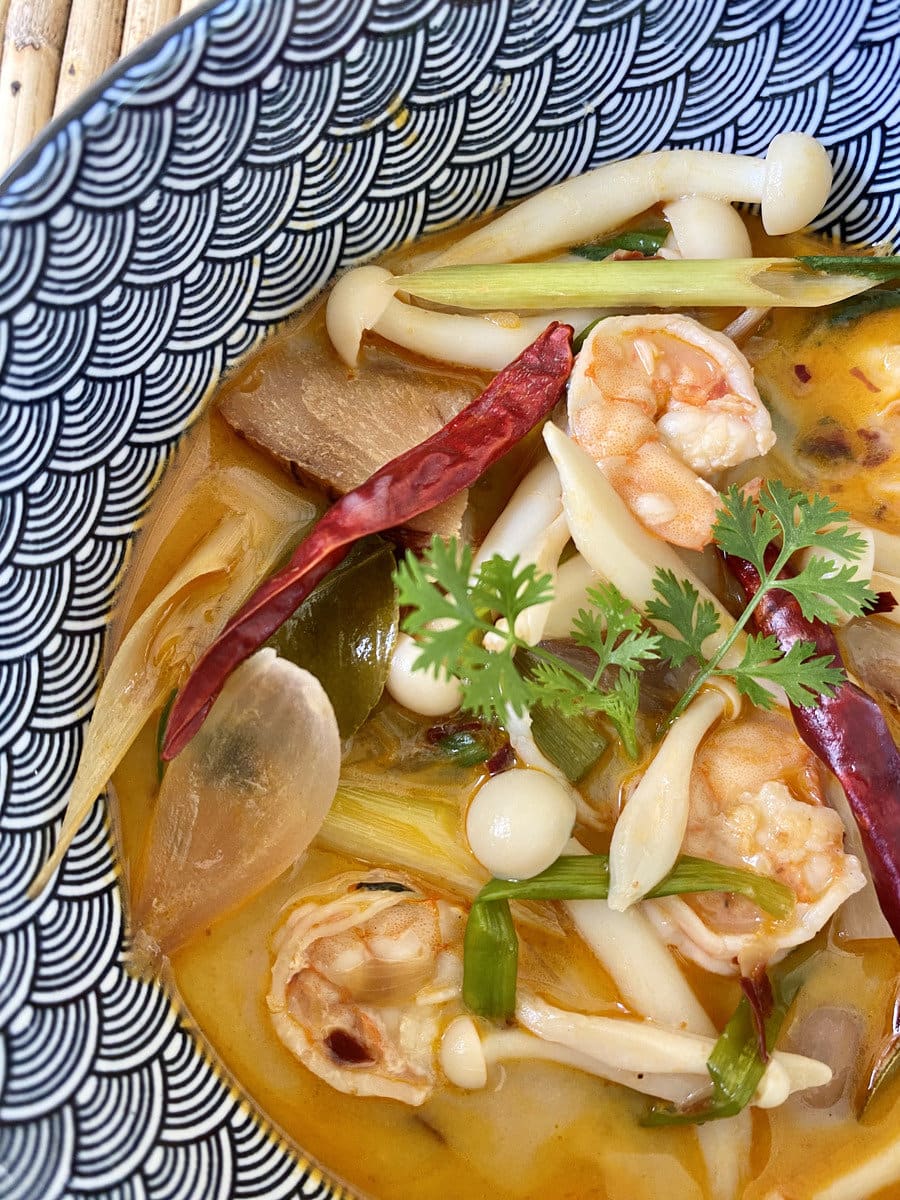Lemongrass is impossible to ignore on those heavy summer nights. With mosquitoes waiting for the smallest opening, lemongrass essential oil was once the ultimate weapon to keep them at bay.
Highly fragrant, lemongrass is not only an excellent repellent against these tiny pests, but also an indispensable ingredient to keep on hand if you want to try your hand at Thai cuisine or Vietnamese cuisine!
What is lemongrass?
As its name suggests, lemongrass is a citrus-scented herb harvested from the plant’s stalk.
Around the world it is prized in both traditional medicine and cooking. The plant thrives in hot, humid regions and is especially popular across tropical Southeast Asia.
A staple of Thai cuisine, it is also common in Indonesian cuisine, as well as Sri Lankan and Indian cooking. If your dish needs an extra burst of freshness and bite, lemongrass is probably the answer!

In the kitchen, lemongrass can be used fresh or dried. Fresh stalks are preferred because they deliver a vibrant, more complex mix of flavours (perfect for stir-fries, for example!).
Dried lemongrass also has its own charm if you enjoy woody flavours. Add it to slow cooked dishes, such as in soups and broths, where it has time to rehydrate and release its aroma!
Origin of lemongrass
The exact origin of lemongrass is unclear, but it is believed to come from tropical Asia, especially Thailand, Cambodia and Vietnam.
In Southeast Asia, it has been used for centuries in both cooking and traditional medicine. Today it is widely cultivated in Africa, Central America and South America, where the climate is favourable.
Over time its popularity spread worldwide, and it is now common in many cuisines, even in Europe!
The taste of lemongrass
Lemongrass has a light lemon flavour with subtle hints of ginger and lime, giving it the exotic touch we love in Thai dishes.

Refreshing and herbal, lemongrass adds zing to many dishes, from noodle dishes to fish. It can be used with both raw and cooked ingredients. For best results, let it steep for about 10 minutes to extract as much aroma and flavour as possible.
The difference between lemongrass and lemon
Although they share a similar lemony aroma, lemongrass and lemon are two distinct plants with very different flavours.
A lemon is a citrus fruit with rough skin and juicy, acidic flesh, whereas lemongrass is an aromatic herb made up of slender stalks topped with long, broad leaves.
Lemongrass offers a mild, slightly lemony taste and smell. Lemon, by contrast, is often used to add acidity to dishes, such as meat marinades, and can brighten sauces like kecap manis or Thai dressings.
Lemongrass, on the other hand, is used to perfume dishes such as soups, curries and other Asian meat dishes.

The benefits of lemongrass
Lemongrass is thought to offer many health benefits thanks to its medicinal properties.
For example, it is a strong antioxidant and its anti-inflammatory properties may help relieve joint and muscle pain.
That is not all: lemongrass may also aid digestion by easing stomach aches and nausea, and it can improve sleep quality thanks to its calming properties.
Beyond medicine, lemongrass is prized in cosmetics for its refreshing fragrance as well as its antiseptic and moisturising properties.
How do you use lemongrass?
Widely used across Asia to add a lemony, herbal note to dishes, lemongrass can make all the difference when handled correctly. From infusions to curries, the possibilities are endless.

Start by removing the fibrous outer layer, then cut the tender core into thin slices or small dice. If you are using dried lemongrass, grind it into a powder so it is easier to work with.
For infusions, whether in soups such as bo kho, broths or drinks, add the pre-cut slices or lemongrass powder to boiling water and let it steep for 10 to 15 minutes.

For meat or fish marinades, mix the chopped lemongrass with other ingredients such as garlic, ginger, lemon juice or olive oil. Let the mixture marinate for at least 30 minutes before cooking.
Lemongrass also pairs wonderfully with pork and chicken (my lemongrass chicken is one of the site’s favourite dishes) as well as with salads, rice and noodles. For curries (such as Thai tom kha), sauces and stews, sauté the lemongrass in hot oil for a few minutes before adding the remaining ingredients.
Needless to say, do not add too much lemongrass, as its strong flavour can quickly overpower the other ingredients. Let’s not overdo a good thing!
How do you replace lemongrass?
If you don’t have lemongrass on hand, several well known substitutes can come to the rescue. Ginger, for example, can replace it in many dishes; it has a similar flavour but is stronger and spicier.
Another option is lime zest. Although milder and more citrusy, it still adds the note of freshness you get from lemongrass.

None of the above? Capers, with their strong, salty taste, can save the day in certain sauces and marinades.
Otherwise, turn to other aromatic herbs such as thyme, lavender, rosemary or basil. The flavour will be different, but they still bring a touch of freshness.
Note, however, that each of these substitutes tastes different from lemongrass, so use them sparingly and taste as you go to avoid overpowering your dish.

Where can you find lemongrass?
Many supermarkets (and the number is growing) and Asian grocery stores now stock lemongrass. You can also find it in natural and organic food shops.
Lemongrass is sold in several forms: fresh, dried, powdered or in sticks. If you cannot find it locally, you can always order it online from suppliers that carry a wide range of Asian ingredients.
How do you store lemongrass?
Storage depends on the form of your lemongrass. If you have fresh stalks, you can keep them in an airtight bag in the refrigerator for about 1 to 2 weeks.
You can also freeze it: wrap the stalks in aluminium foil and place them in an airtight freezer bag. They will keep for about 6 months.
If you have dried or powdered lemongrass, store it in an airtight container in a cool, dark place for 6 to 12 months.

How to Cook with Lemongrass?
Equipment
Ingredients
- Fresh lemongrass stalks
Instructions
- Cut about 1 cm off the bottom of the stalk. Then trim the top of the stalk to remove the thin leaves.
- Next, peel away 1 or 2 of the outer layers of the stalk. How many layers you remove depends on the freshness of the lemongrass. If you’re working with stalks that aren’t very fresh, you may need to remove an extra layer or two. Because lemongrass is grown in soil, dirt often clings to the stalk. Rinse the lemongrass with water if you see any visible dirt.
Lemongrass Stalks
- If you’re making a soup or broth, cut the stalk into 5 cm (2-inch) sections. Then pound each section with a kitchen mallet or meat tenderizer until you see the stalk slightly split. This technique releases the oils from the stalks.
Sliced Lemongrass
- You can cut the stalk into thin rounds. If you want to use them for stir-fries, slice them very thinly (almost paper-thin) so they’re easier to eat. Otherwise, the lemongrass will seem tough and fibrous.
Grated Lemongrass
- If you want to infuse a sauce or marinade with lemongrass, I recommend grating the lemongrass with a zester/microplane. This way the lemongrass will combine easily with the other ingredients and be easy to eat. Keep in mind that the preparation method you use depends on the recipe.

